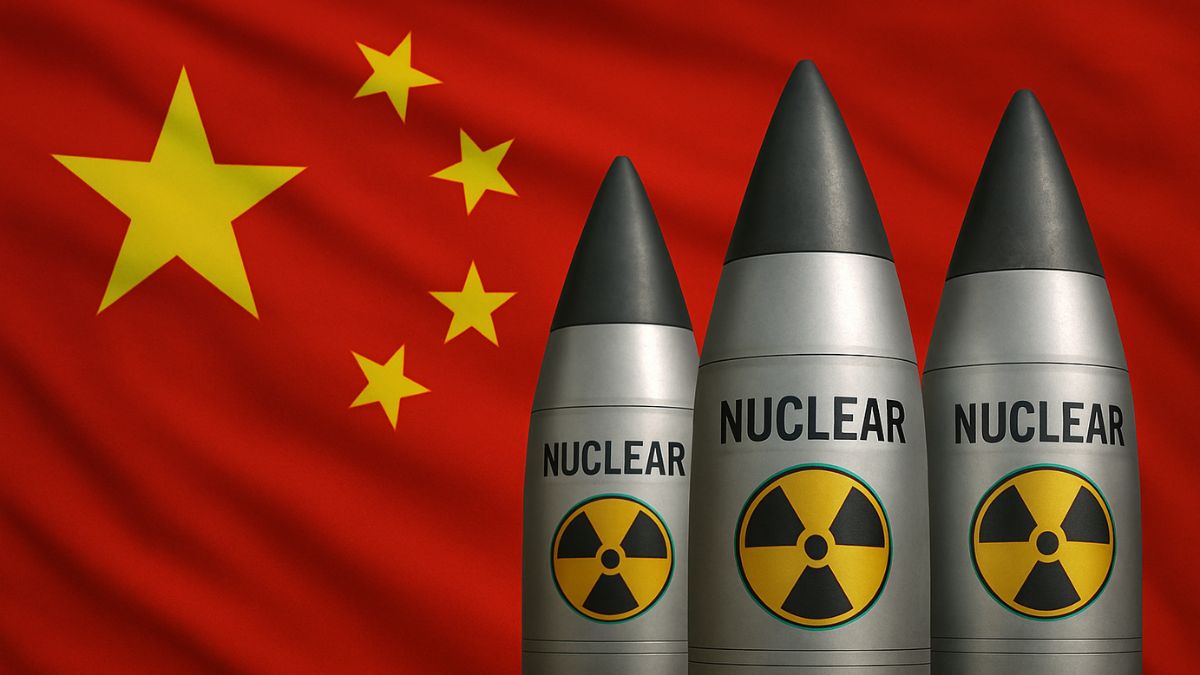China is expanding its nuclear arsenal faster than any other country, according to a report released Monday (June 16) by the Stockholm International Peace Research Institute (SIPRI). The findings come amid broader concerns about the decline of global arms control regimes and the modernisation efforts of all nine nuclear-armed states.
SIPRI’s annual yearbook says China has added roughly 100 warheads each year since 2023, bringing its estimated total to at least 600 nuclear warheads as of January 2025.
How fast is China’s nuclear arsenal growing, and how does it compare to others?
SIPRI’s research shows that China now holds the fastest-growing nuclear arsenal in the world, accelerating its build-up well beyond its previous “minimum deterrence” strategy. While the United States and Russia still maintain the world’s largest nuclear stockpiles — together accounting for approximately 90% of the global total — China’s rapid development trajectory could enable it to match the ICBM (intercontinental ballistic missile) capabilities of either country by 2030.
As of January 2025:
- Total global nuclear warheads: 12,241
- In military stockpiles (for potential use): 9,610
- Deployed on missiles and aircraft: 3,910
- Kept on high operational alert: 2,100 (mostly Russian and US)
- China’s estimated warhead total: 600 (132 assigned to launchers)
SIPRI warns that if China equips each of its under-construction missile silos with missiles armed with three MIRVs (multiple independently targetable re-entry vehicles), it could potentially field over 1,200 ICBM warheads within a decade.
What new developments in China’s nuclear infrastructure are driving this expansion?
China has either completed or is close to completing around 350 new ICBM silos across three desert regions in the north and three mountainous areas in the east. These silos, once armed and operational, could mark a significant leap in Beijing’s nuclear deterrence capabilities.
In terms of missile systems, China has upgraded its DF-5 ICBMs with MIRV technology. It has also deployed the DF-41 missile, capable of carrying multiple warheads to separate targets.
Beijing is developing its next-generation Type 096 nuclear submarines, while upgrading existing Type 094 SSBNs with JL-3 submarine-launched ballistic missiles (SLBMs).
Although these sea-based platforms do not yet pose a significant threat to the US mainland, experts suggest they could be used against regional targets or US territories like Alaska or Hawaii.
What’s behind Beijing’s nuclear build-up?
Hans Kristensen, director of the Federation of American Scientists’ nuclear information project and a senior fellow at SIPRI, suggests that China’s posture reflects several strategic changes:
- Desire to be a “world-class military” by mid-century, as urged by President Xi Jinping.
- Concern that its “minimum deterrent” doctrine is inadequate against US missile defenses.
- A recognition that MIRV-capable systems can multiply China’s retaliatory power against adversaries.
SIPRI notes that China “may now keep some warheads on missiles during peacetime,” a break from previous practice where warheads were stored separately.
What does this mean for global nuclear trends?
SIPRI warns that the post–Cold War era of global nuclear reduction is over. Instead, nearly all nine nuclear-armed states — including India, Pakistan, North Korea, the UK, France, Israel, China, the US, and Russia — are modernising their arsenals.
China’s trajectory, in particular, could undermine decades of arms control progress. Without new agreements to replace the New START Treaty, which expires in February 2026, both the US and Russia are expected to increase their deployed strategic warheads.
In terms of nuclear posture, China is moving toward more survivable and flexible delivery systems.
Russia and the US have ongoing modernisation programmes that will expand both stockpile diversity and capabilities.
Kristensen said, “We are witnessing the reemergence of a multi-polar nuclear environment with greater uncertainty, increasing stockpiles, and weakened global arms control norms.”
